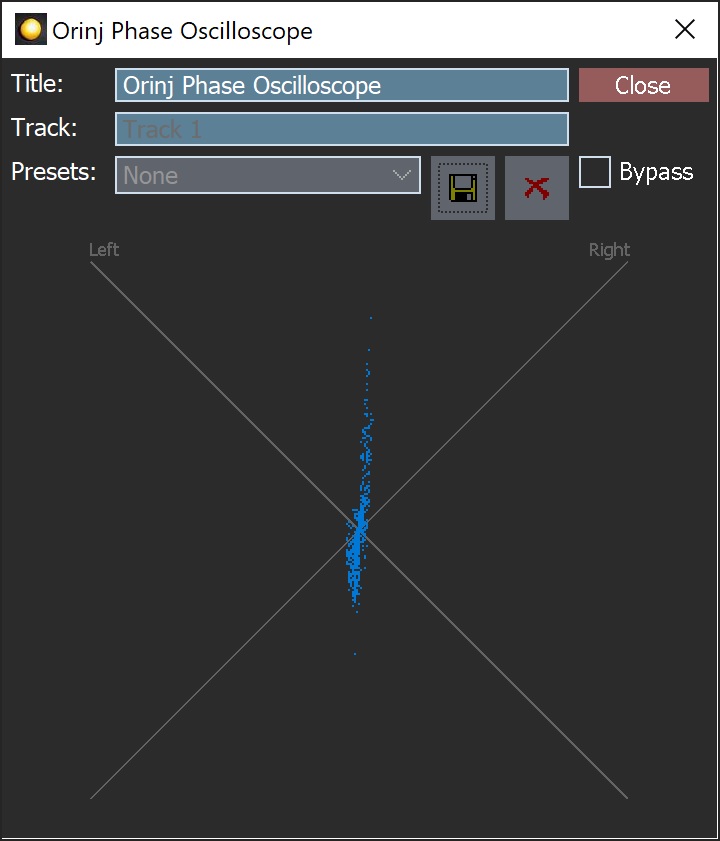Orinj version 7.0.0
The Orinj Phase oscilloscope is a monitoring tool that shows differences in the amplitude, frequency, and phase content of the left and right channels of the signal. It uses the Orinj effect framework and works similarly to all other DSP effects, but it only displays information about the sound signal and does not modify the signal.
A phase oscilloscope is a plot of the values of the right signal against the values of the left signal. In a signal, where the left and right channel carry the same information, the phase oscilloscope will display a line that is centered between the left and right axes. When the left channel or right channel amplitude becomes larger than the amplitude of the other channel, this line will move towards the left or right axis respectively. When the frequency and phase content of one channel differs from the frequency and phase content of the other channel, the phase oscilloscope plot will become more complex.
Using the Orinj Phase oscilloscope
The Orinj Phase oscilloscope can be added to tracks, auxiliary channels, and the master channel in the multitrack session view and to waves in the single wave view.
- To add the effect to a track in the session, first click on the track to select it. Click on Effect, Other, and then on Orinj Phase Oscilloscope in the menu.
- To add the effect to an auxiliary channel in the session, click on Track, then Groups / Aux Channels, and then on Aux Channel Controls in the menu. In the auxiliary channel control dialog, click on the Add button.
- To add the effect to the master channel in the session, click on Track and then on Master Channel in the menu. In the master channel dialog, click on the Add button.
- To add the effect to a wave in the single wave view, click on Effect, Other, and then on Orinj Phase Oscilloscope in the menu.
You will see the following dialog.

When this dialog becomes visible, the Orinj Phase oscilloscope effect has been added.
Note that the Orinj phase oscilloscope operates during playback, but not according to the precise playback timing. In the Orinj effect framework, effects process and prepare the sound data before these data are sent to the output sound device. The phase oscilloscope similarly computes information on what should be drawn before the corresponding sound data is sent to playback. It then attempts to show this information at the time of the corresponding playback. The Orinj effect framework, however, does not permit the Orinj effects to be aware of the playback time. The Orinj phase oscilloscope may display sound data earlier than its playback and may occasionally wait for data. When switching between effect channels with the Effect Channel command, for example, there may be a delay until the phase oscilloscope switches to the desired channel.
Since the oscilloscope is designed to compare the left and right channel, it is meaningless on mono waves. Mono sound is converted to stereo sound before playback, but the sound in the two channels is identical. The phase oscilloscope will simply display a straight vertical line.
Orinj Phase oscilloscope parameters
The Orinj Phase oscilloscope has no parameters. It simply displays a plot of the sound data during playback.
Add new comment